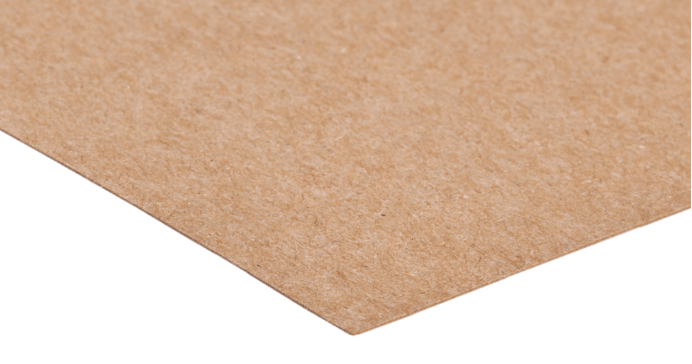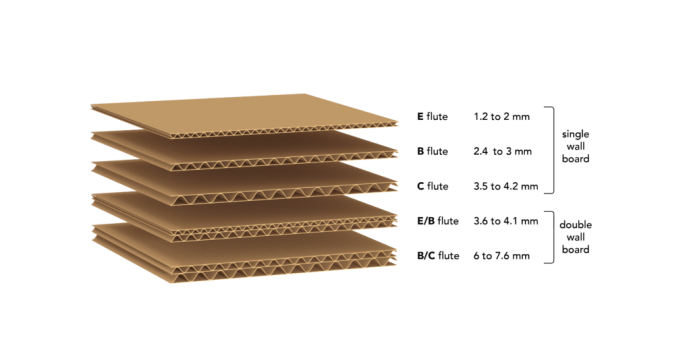
Get A Quote
Cardboard Types Used in Packaging
Cardboard, a staple in the packaging world, comes in an array of types, tailored for various uses in our daily lives.
This versatile material is known for its range in thickness, shape, and form, offering a unique combination of strength and lightness, along with efficient thermodynamic characteristics.
This piece delves into the prevalent cardboard types utilized in packaging, shedding light on their widespread dependability.
First, let's understand the composition of cardboard.
Understanding Paper Types
To grasp the diversity of cardboard, it's crucial to recognize the different papers or paper pulps that constitute it. These papers impart distinct properties to cardboard, influencing its applicability.
Interestingly, cardboard production mainly involves two paper types: Kraft and Test liners.
Kraft paper originates from virgin softwood trees such as pine, spruce, and fir. The term 'virgin' indicates that the paper pulp is freshly sourced, not recycled.
The fresh nature of these wood fibers, coupled with the production process, endows Kraft paper with remarkable strength and makes it the preferred choice for printing.
Kraft paper's robustness and printability render it the go-to paper for cardboard surfaces meant for printing and parts needing structural strength.
Misleadingly Named 'Test' Paper
The term 'test' paper might sound underwhelming, but it refers to recycled paper.
This paper undergoes a transformation from one paper product to pulp and then back into cardboard. However, this recycling process weakens the wood fibers, affecting both its strength and printability.
Despite these limitations, its cost-effectiveness makes it a practical choice, especially for parts of packaging that remain out of sight.
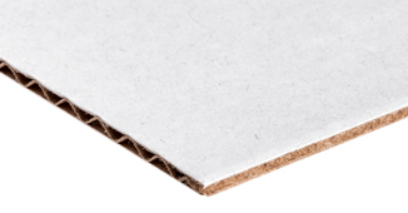
Kraft and Test Liners: Layered Composition
Kraft and test liners, commonly used in the packaging industry, consist of two laminated layers.
The foundational layer is designed for strength, while the top layer is of superior quality, intended for printing and enhancing visual appeal.
While Kraft and test liners are the primary choices, other variants are also used for these layers. These alternatives may prioritize durability over aesthetics, come in bleached white, or vary in the amount of recycled content used.
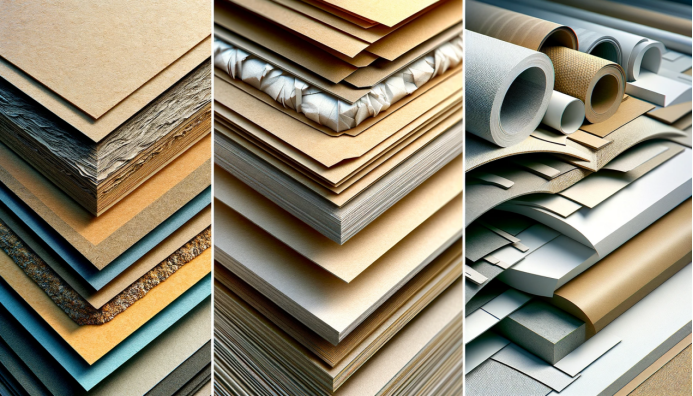
Understanding Corrugated Cardboard
Let's explore the construction of corrugated cardboard, the most prevalent type in the industry.
At its core, corrugated cardboard comprises three distinct layers: a central wavy, fluted sheet nestled between two flat cardboard sheets.
The fluted middle layer is securely glued to each flat layer. This unique fluted design is key to the strength and durability of corrugated cardboard.
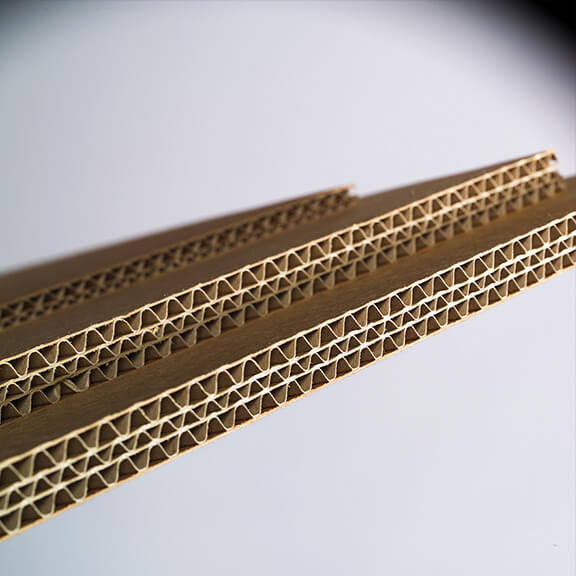
Paper Weight and Thickness (GSM) in Cardboard
The thickness of the paper is a critical factor in determining cardboard strength. This thickness is measured in Grams per Square Meter (GSM).
For example, a cardboard's grammage might be described as '135/155K', indicating that the inner liner has a GSM of 135 and the outer liner 155, with 'K' denoting a Kraft liner.
Wall Types in Cardboard Packaging
In packaging, the concept of 'wall types' is vital. A 'single-walled' box, for instance, is composed of two flat layers and one fluted layer of cardboard, forming one wall of protection.
For items needing more protection, such as heavy or fragile goods, a double-walled box is used. This involves an additional fluted layer and liner.
Here's an example:
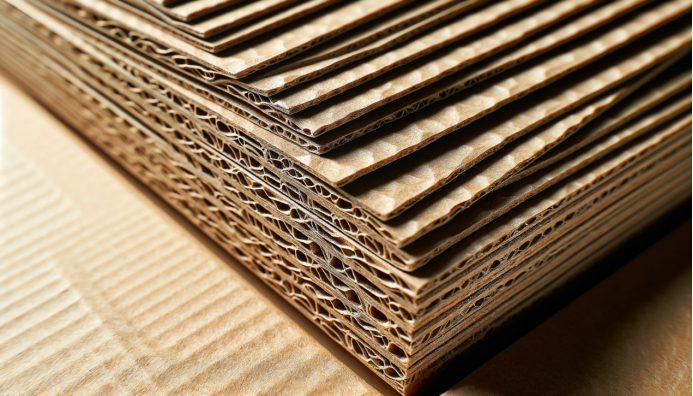
For even heavier items like automotive and industrial parts, triple-walled or tri-wall packaging is ideal. Furthermore, layering cardboard can enhance the box's thermal properties, helping to maintain the temperature of the contents.
Cardboard Flutes: The Backbone of Structural Integrity
Flutes, the wavy component in cardboard, play a pivotal role in defining its structural integrity, determining its applications.
The fluting significantly influences both the weight and cost of the cardboard. By varying the height of the corrugation, and thus the size of the flutes, the cardboard's properties are altered.
There are standardized flute sizes, ranging from E (very fine) to A or B (thicker), each suited for different packaging needs.
Standard Flute Sizes:
- A flute: 5mm, ideal for bulky packaging.
- B flute: 3mm, commonly used for stronger, heavier boxes.
- C flute: 4mm, offers a good balance of strength and cost.
- E flute: 1.5mm, perfect for retail packaging, easy to print on.
- F flute: 2mm, thinner and more eco-friendly.
- G flute: 0.5mm, extremely fine, used for specialty packaging.
The Difference Between E and B Flutes:
The primary difference is in thickness and strength. B flute, being thicker and heavier, provides more structural strength.
Cardboard can also be double or triple-walled, resulting in combinations like EB or BC flutes. These combinations offer the best of both worlds: structural strength (B flute) and a smooth surface for printing (E flute).
Popular Fluting for Double-Walled Cardboard:
- BC flute: 6mm, combining B and C flutes for extra strength.
- EB flute: 4.5mm, blending E's printability with B's sturdiness.
- AC flute: 8mm, merging A and C flutes for maximum durability.
Decoding Corrugated Board Abbreviations
With the knowledge of cardboard's various elements, it's possible to understand the shorthand used in the industry. For instance, "125K/E/125T" indicates an outer layer of 125 GSM Kraft paper, a middle E grade flute, and an inner layer of 125 GSM Test paper. The sequence always starts with the external layer.
For another example, "330K/C/220T" would mean a 330 GSM Kraft paper liner, a C grade flute, and a 220 GSM Test paper liner inside.
Flute Types and Their Applications
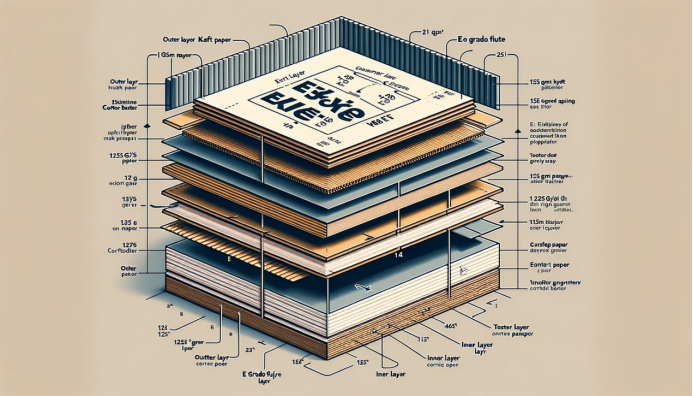
Each flute size in cardboard has its unique application:
- B Flute: The most popular for mailer boxes, B flute is known for its versatility.
- C Flute: Slightly thicker (3.5mm to 4mm), it's used in standard moving and shipping boxes, offering better crash protection but with a limited stacking capacity.
- E Flute: The thinnest commonly produced corrugated cardboard, 1mm to 1.5mm thick, is ideal for printing and provides decent crush protection.
- BC Flute: A double-walled, roughly 7mm thick cardboard, BC flute is perfect for heavy items needing extra protection.
- EB Flute: Combining a thick and thin flute, this 4mm to 5mm thick cardboard offers both excellent printability and durability.
Conclusion
Understanding the specifics of cardboard is crucial for informed packaging decisions. Cardboard's versatility, durability, and recyclability make it an ideal material for various packaging needs. Whether you're packaging small items or shipping bulky products, the right type of cardboard can offer the necessary protection while being environmentally friendly. By understanding the different types of cardboard, their strengths, and their applications, you can make decisions that not only meet your packaging requirements but also align with sustainability goals. This knowledge is invaluable for businesses and individuals alike who seek efficient, responsible packaging solutions.
Want to customize your tube or box packaging solution? Leave your needs below and our experts will contact you soon!
